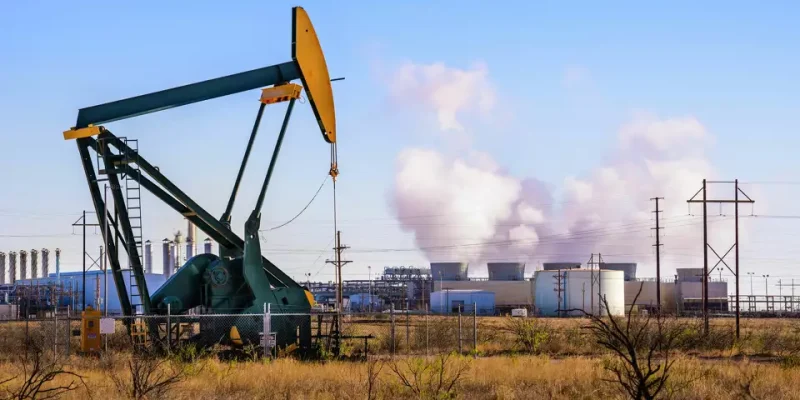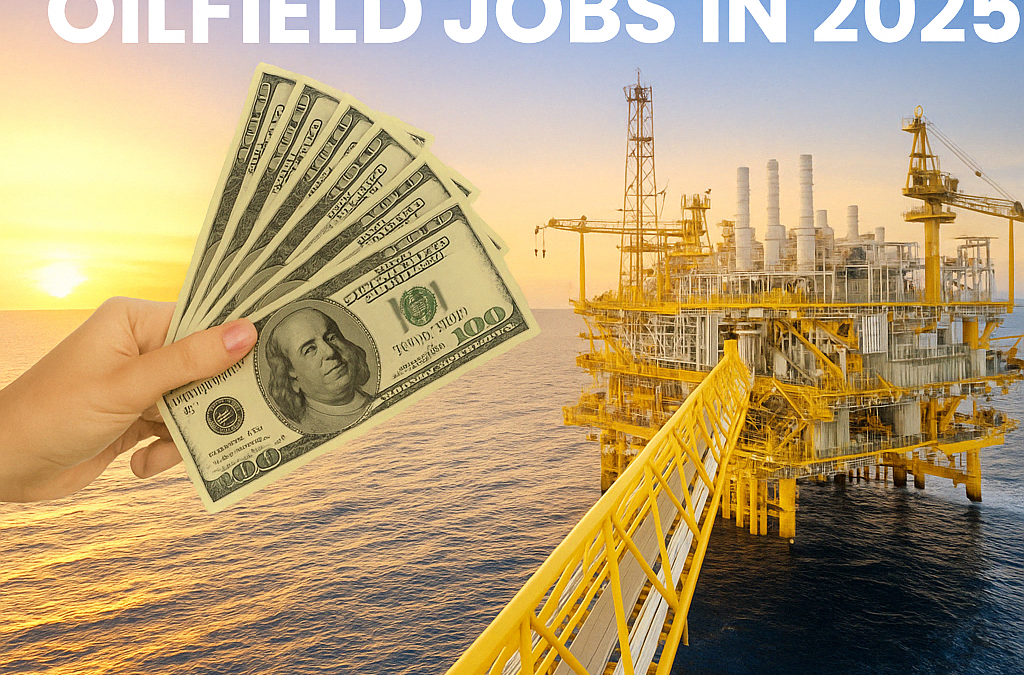Permian Basin to drive U.S. oil and gas production growth in 2025

A pumpjack and oil refinery in Seminole, Texas.
With final numbers for 2024 being tallied, the Permian Basin is again the star of the nation’s oil and natural gas production. And expectations are that won’t change in 2025.
East Daley Analytics issued its projections for 2025 and projects oil output to rise from 13.14 million barrels a day in 2024 to 13.64 million barrels a day in 2025. The Permian Basin will once again be the primary driver of U.S. growth as rising natural gas prices will spur an expansion of drilling and higher gas-to-oil ratios.
Basins like the Permian, Bakken and Denver-Julesburg have also substantially benefited from enhanced drilling technologies, including longer lateral drilling and multi-well pads. Once implemented, these technologies improve various well-to-rig metrics, such as higher well-per-rig rates, lower spot-to-spot rates, and increased initial production rates for gas and liquids.
East Daley anticipates dry gas production growing from 102.9 billion cubic feet per day in 2024 to 106.8 Bcf per day in 2025. The majority of natural gas production growth will come from the Permian Basin, the Northeast, and the Ark-La-Tex region.
A key factor in this forecast is a prediction of a Henry Hub price of $3.42 per million British thermal units (MMBtu) in 2025, which is more than $1 higher than the year-to-date average of $2.20/MMBtu in 2024. Domestic demand is expected to be driven by new data center projects, which will sustain steady gas demand through the end of the decade. Additionally, there is greater exposure to international markets, fueled by an increase in liquefied natural gas (LNG) projects along the Texas-Louisiana coast. By the end of next year, East Daley anticipates total export gas demand to rise to 15 Bcf per day.
The outlook was issued just before President Trump took office for a second term and announced tariffs on Canada and Mexico, the top two exporters of energy to the U.S., as well as on China.
“We don’t see tariffs having much impact on the landscape of production. Companies are focused on the economics and have been disciplined on maintaining a healthy balance sheet. ‘Drill, baby, drill’ is probably more ‘drill into the economics,'” Chris Noonan of East Daley told the Reporter-Telegram.
East Daley also found that ethane was a quiet star for the Permian, with Permian ethane supply hitting multiple records in 2024 despite oil and gas production struggling to reach prior highs. East Daley is bullish on the ethane outlook for several reasons, and view Phillips 66’s $2.2B deal with EPIC NGL as confirmation. Permian supply growth propelled Lower 48 ethane to new production records in March, April, May and October of last year.
One reason for the bullish outlook is new and expanded natural gas liquids pipelines that debottlenecked Permian supply. Second is the race for big strategic midstream companies to acquire the NGL barrel. In 2022, East Daley notes, 50% of rich Permian gas was processed by large integrated midstream owners, rising to over 75% today.
Asked if operators could turn ethane into a revenue stream, Rob Wilson of East Daley said that midstream companies may want the ethane more because of the integrated value chain economics. Producers would take the natural gas over ethane most of the time, though he hasn’t yet calculated the break-even economics recently, he told the Reporter-Telegram.
That growing ownership incentivizes those large midstream companies to extract ethane from their processing plants. It’s more valuable to an integrated midstream company than a molecule of natural gas because of the fee-based earnings potential to transport, store, fractionate and export ethane.
“When there is very tight gas egress, we see an uptick in ethane. So weak Waha gas prices and more ethane supply into an already oversupplied market means ethane prices have downside risk like in last August. Of course, this also presents a contango curve that asset operators and traders can benefit from by purchasing ethane on the spot market and selling it forward on a higher priced part of the curve at one, two or three months out. Where there’s risk, there’s also opportunity, right?” he said.















